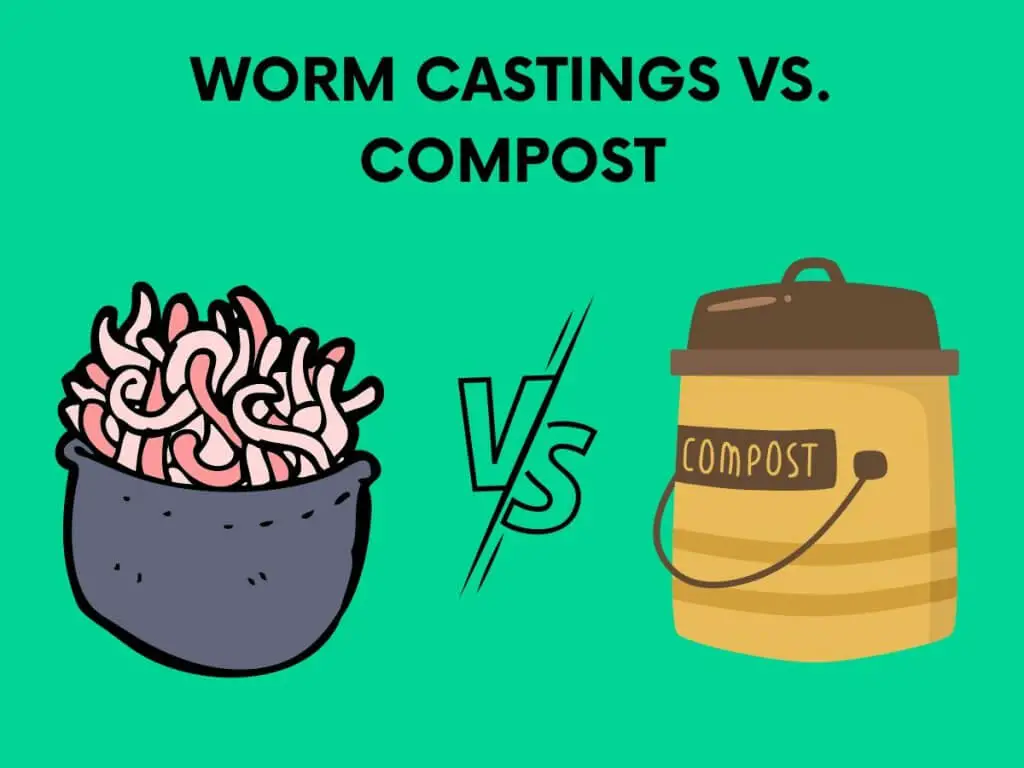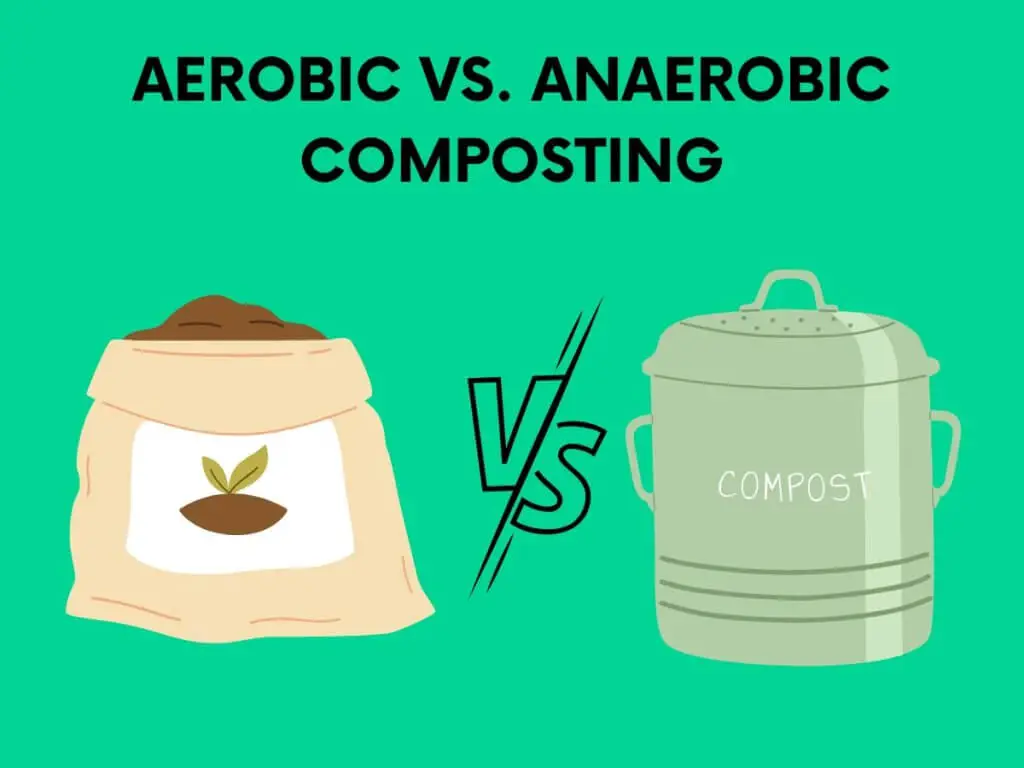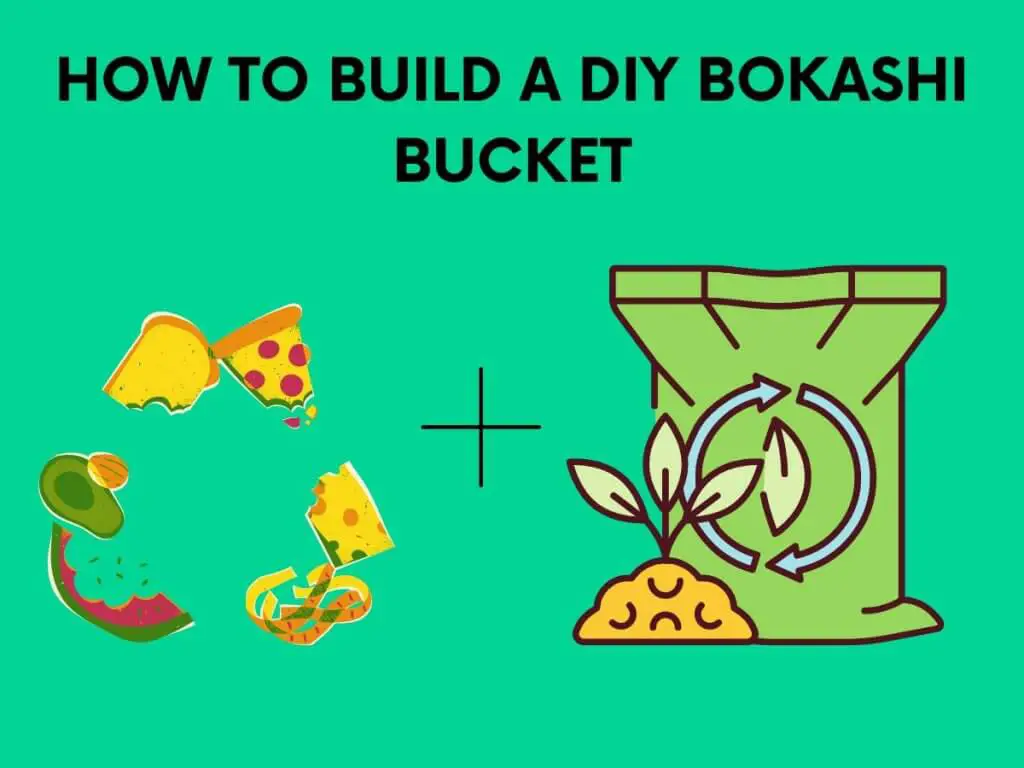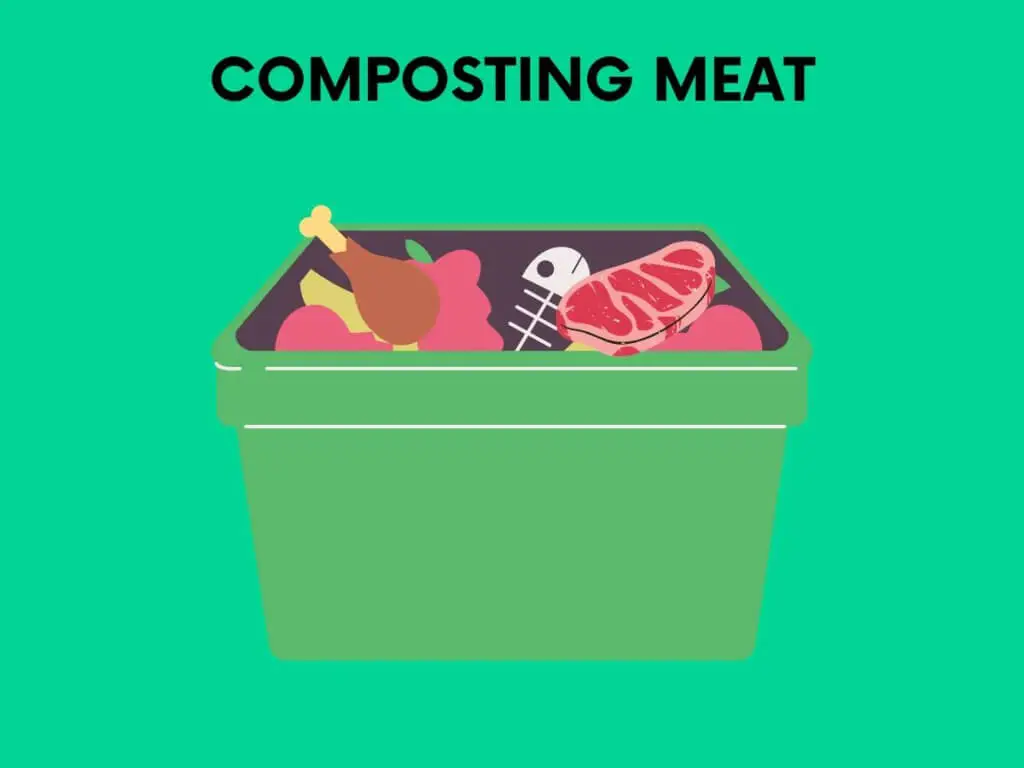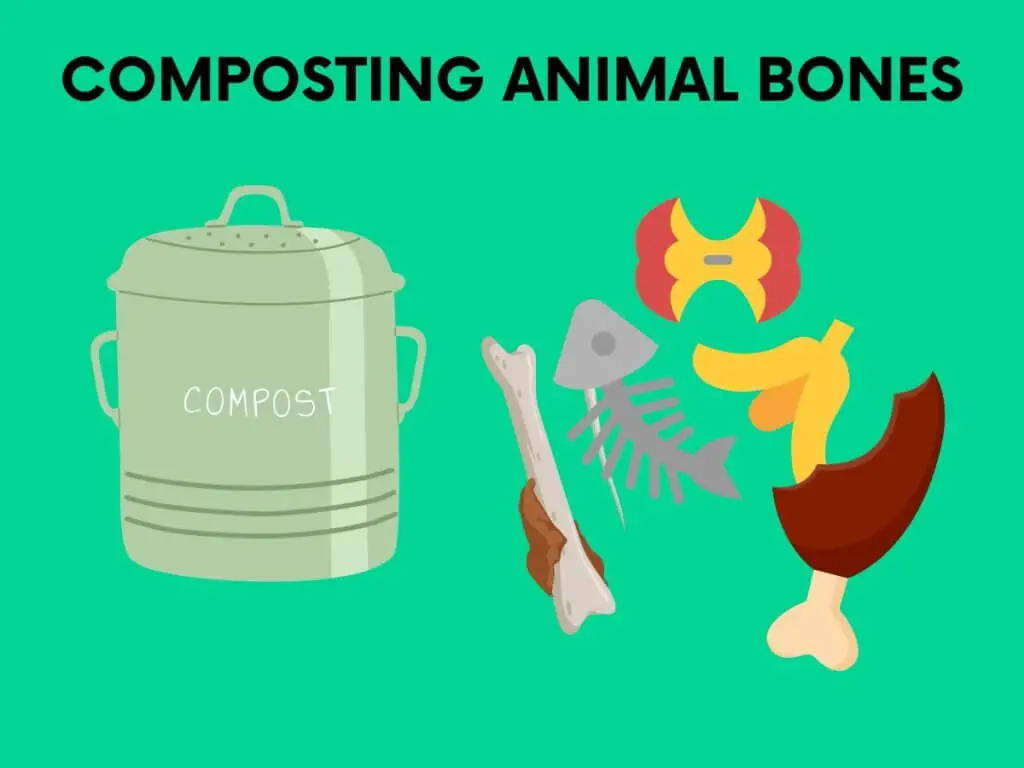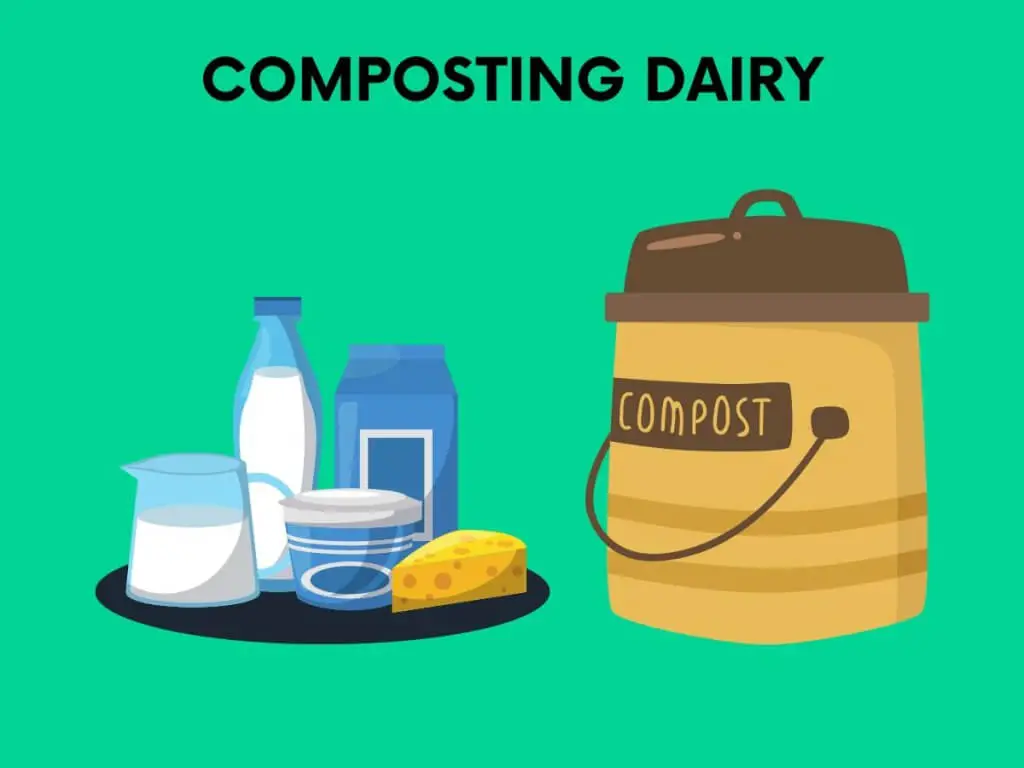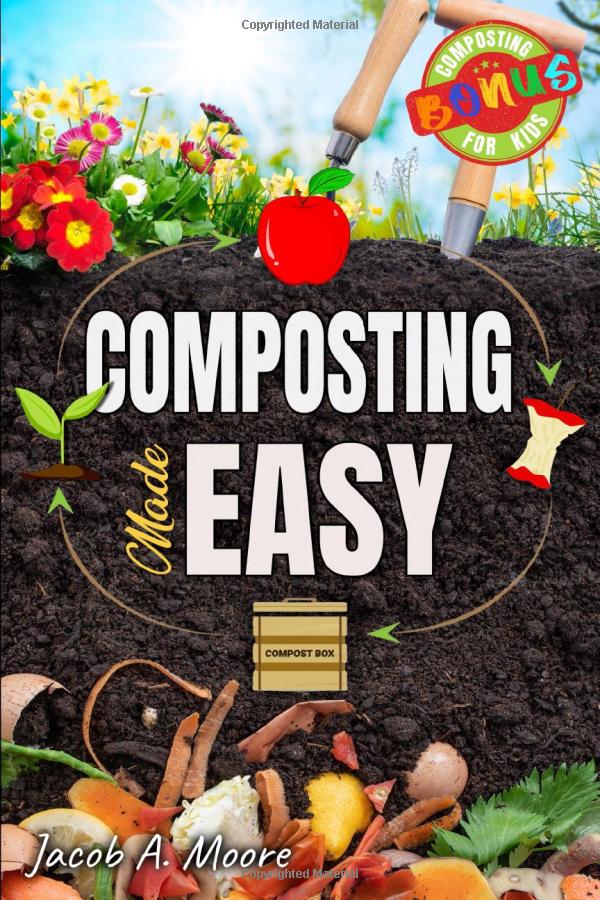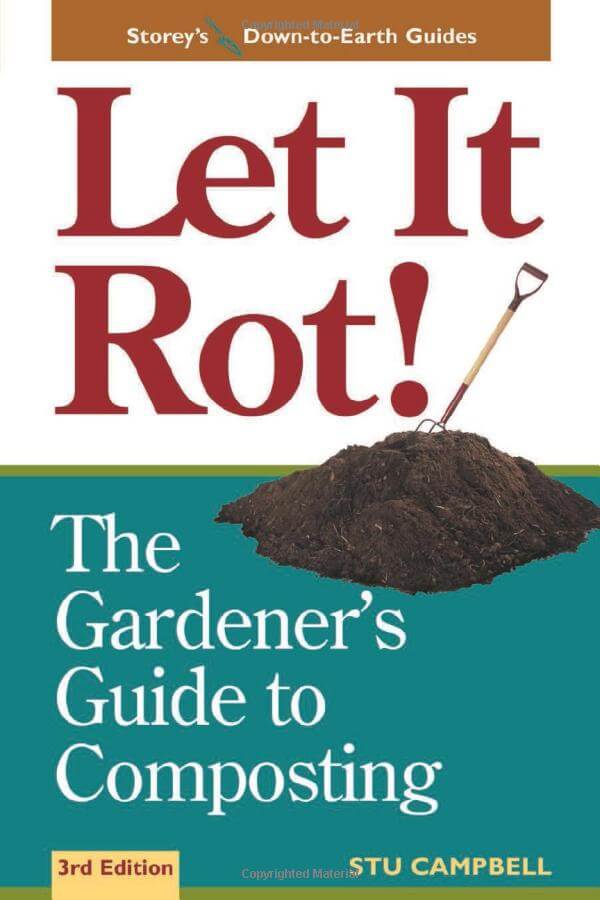Composting is a process that involves breaking down organic waste into nutrient-rich soil. It’s a natural and sustainable way to dispose of food scraps, yard waste, and other organic materials.
While composting has been practiced for centuries, it has become increasingly popular in recent years as more people are looking for ways to reduce their environmental impact and live more sustainably.
This article explores the ins and outs of composting and helps you decide if it’s a good fit for your lifestyle.
Is Composting For You?
Read the following points to see if it is.
- If you’re looking for a way to reduce waste and contribute to a healthier environment, composting may be right for you.
- You can start composting if you have access to outdoor space, whether it’s a backyard, balcony, or community garden.
- If you have yard waste, such as leaves, grass clippings, or pruned branches, you can compost them rather than throw them away.
- If you have food scraps, such as fruit and vegetable peels, eggshells, and coffee grounds, you can compost them rather than throw them in the trash.
- If you’re willing to invest a little time and effort into setting up and maintaining a compost pile, composting can be a rewarding and beneficial activity.
- If you’re happy to learn about the dos and don’ts of composting, such as what materials can and cannot be composted, composting can be an easy and enjoyable process.
- If you’re unsure if composting is right for you, consider starting small with a simple composting method, such as a worm bin or a small composting container, to see if it’s a good fit for you.
Understanding Composting
Composting seems intimidating to beginners, but it’s actually a straightforward process that anyone can learn.
In this section, we’ll break down the basics of composting and provide simple tips for getting started.
1. What is composting?
Composting is the natural process of separating organic waste such as food scraps, yard waste, and leaves and turning it into a nutrient-rich soil amendment.
It is achieved through the activity of microorganisms, such as bacteria and fungi, that decompose the organic matter over time.
The resulting compost can be used as a fertilizer for plants and gardens, helping to improve soil health and reduce the need for chemical fertilizers.
2. Why composting is important
Composting is important for several reasons:
- It diverts organic waste from landfills, where it contributes to greenhouse gas emissions
- It reduces the need for chemical fertilizers, which have negative environmental impacts
- It improves soil health and supports healthy plant growth, making it a valuable tool for sustainable agriculture and gardening
3. Types of composting methods
Several composting methods exist. Each technique has its own benefits and drawbacks, and the best way for you will depend on factors such as the type and amount of waste you have and the space available for composting.
- Aerobic composting: This method involves using oxygen to break down organic waste, typically in a compost bin or pile that is turned regularly to promote airflow.
- Anaerobic composting: This method involves breaking down organic waste without oxygen, typically in a closed container such as a compost tumbler.
- Vermicomposting: This method uses worms to break down organic waste, typically in a worm bin.
- Bokashi composting: This method involves fermenting organic waste using a special type of bacteria, typically in an airtight container.
- “Sheet composting: This method involves layering organic materials directly onto the ground, where they will break down over time. It is also known as “lasagna composting.”
Click the images below to learn more:
Materials to Compost
Knowing what materials to compost is essential to creating a healthy and effective compost pile.
In this section, we’ll explore the different types of materials that can be composted and some materials to avoid.
1. Organic materials that can be composted
You can compost various organic materials, including fruit and vegetable scraps, coffee grounds, eggshells, yard waste, and paper products such as shredded newspaper and cardboard.
2. Materials that should not be composted
Several domestic materials should not be composted, including meat, dairy, and oily foods, which attract pests and slow down the composting process.
Pet waste, treated wood products, and invasive weeds should also be avoided, as they contain harmful pathogens or chemicals that may not break down properly in the compost pile.
However, if you still want to try and compost meat, bones, pet waste and dairy, check my guides and the video below on how to safely do it.
Click the images below to learn more:
Additionally, large branches or woody materials take a long time to decompose and should be avoided unless they are first shredded or chipped.
3. How to balance carbon and nitrogen in your compost
To create a healthy and effective compost pile, balance the carbon-rich “browns” with the nitrogen-rich “greens”.
Aim for a ratio of roughly 3 parts browns to 1 part greens by volume, using materials such as leaves, straw, and sawdust for browns and materials such as grass clippings and food scraps for greens.
Turning the compost pile regularly and keeping it moist also speeds up the decomposition process.
Starting a Compost Pile
Starting a compost pile may seem daunting, but it’s a simple process that you can do in just a few basic steps.
This section will walk you through starting a compost pile, from choosing a location to adding materials and maintaining the pile.
1. Choosing a location for your compost pile
When choosing a location for your compost pile, look for a spot that is level, well-drained, and receives partial sun.
Avoid areas with standing water, low-lying sites that collect runoff, or places near trees with shallow roots.
You should consider accessibility, as you’ll want to add materials and turn the pile.
2. Building a compost bin or pile
To build a compost bin or pile, start by layering browns and greens in a ratio of roughly 3:1 by volume. Make sure the pile is moist but not too wet, and turn it regularly to promote airflow and decomposition.
You can also build or purchase a compost bin to help contain the pile and speed up the composting process.
3. Adding materials to your compost
Adding materials to the compost involves layering “greens” (nitrogen-rich materials such as fruit scraps, grass clippings, and coffee grounds) and “browns” (carbon-rich materials such as dry leaves, straw, and paper).
Maintain a balance of both types of materials and keep the pile moist but not too wet. Regular turning or stirring of the compost will also help to aerate and distribute the materials.
| Green materials to compost | Green materials to avoid |
| Raw or cooked veggies | Aggressive weeds and grasses (could sprout in your compost) |
| Seaweed | Diseased plants |
| Grass clippings | Some citrus fruits |
| Holiday decorations | Tree stumps |
| Kitchen staples (coffee grounds, tea bags, pasta, rice, bread) | Fresh manure & meat scraps |
| Brown materials to compost | Brown materials to avoid |
| Paper (paper plates, newspaper, napkins, printing or writing paper, and coffee filters) | Certain types of woods (black walnut, tree of heaven, magnolia, and eucalyptus) |
| Cardboard | Plastic coated paper |
| Straw or hay | Charcoal briquettes & ashes with additives |
| Sawdust | Inorganic & non-biodegradable materials (plastic, glass, aluminum foil) |
| Dry fall leaves | Treated wood sawdust |
4. How to layer your compost
To layer your compost, start with a layer of “browns” at the bottom, such as dry leaves or straw. Add a layer of “greens” on top, such as kitchen scraps or grass clippings.
Repeat this process, alternating between brown and green layers, until the compost pile is about three feet high. Finish with a layer of browns on top to help retain moisture.
Maintaining Your Compost
To maintain your compost, turn and mix the materials regularly to provide adequate aeration and moisture, and add brown materials like dry leaves or shredded newspaper to balance out the green materials.
1. Turning your compost
To turn your compost, use a pitchfork or a compost-turning tool to move the outer layer of the pile to the center, mixing in any dry or brown materials as you go.
Repeat this process every one to two weeks or when the temperature in the pile drops significantly. Avoid overmixing, which slows down the composting process.
2. Adding water to your compost
Keep your compost moist, like a damp sponge. If it’s too dry, add water using a watering can or hose, ensuring you make it soggy.
Check the moisture level regularly, especially during dry weather, and adjust as needed.
3. Monitoring the temperature and moisture levels in your compost
Monitoring your compost’s temperature and moisture levels ensures efficient decomposition.
Ideally, the temperature should be between 135 and 160°F (57 and 71°C), achieved by turning the pile regularly and maintaining adequate moisture levels of 40 to 60%.
Use a compost thermometer to measure the temperature and check the moisture level by squeezing a handful of compost; it should feel like a damp sponge.
4. Troubleshooting common composting problems
Here are five common composting problems and how to troubleshoot them:
- If your compost takes longer than usual to decompose, it may be because the pile is too small or lacks the necessary balance of carbon and nitrogen. Increase the pile size and add more nitrogen-rich materials like grass clippings or vegetable scraps.
- A foul odor from your compost pile may indicate an imbalance of materials, inadequate oxygen, or excess moisture. To fix this, add more carbon-rich materials like dried leaves or wood chips, turn the pile to aerate it, and ensure proper drainage to maintain a damp but not waterlogged environment.
- Composting attracts pests such as rodents, flies, and ants. Avoid adding meat or dairy products and bury fruit and vegetable scraps under layers of other materials to deter pests. You can also cover your compost with a tarp or use a closed compost bin to keep pests out.
- If your compost pile is too hot, it may be due to too many nitrogen-rich materials. Add more carbon-rich materials like shredded paper or dried leaves to cool it down and turn the pile to aerate it.
- If your compost is not fully decomposed, it may need more oxygen, moisture, or the right balance of carbon and nitrogen. Turn the pile frequently to aerate it, ensure adequate moisture levels, and add more nitrogen-rich materials if necessary.
Harvesting and Using Your Compost
Harvesting and using your compost is the final step in the composting process and provides nutrient-rich material for your garden.
By following a few simple steps, your compost is ready for use, and you will reap the benefits of your hard work.
1. When to harvest your compost
Compost takes anywhere from a few months to a year to decompose, depending on the materials used and environmental conditions.
It is ready to harvest when your compost no longer resembles the original materials and has a dark, crumbly texture.
Also, check for lack of recognizable materials and a mild, earthy smell.
2. How to use compost in your garden
You can use compost in your garden as a soil amendment, mulch, or potting mix ingredient.
Mix the compost into the top few inches of soil or sprinkle it on top as mulch to improve soil fertility, water retention, and plant growth.
For potted plants, mix compost with potting soil in a 1:1 ratio.
3. Tips for maximizing the benefits of your compost
Here are five tips to get the most out of your compost:
- Compost benefits from diverse materials, including fruit and vegetable scraps, yard waste, coffee grounds, tea bags, corn cobs, banana peels, and eggshells. Avoid adding meat or dairy products, as these slow the rate of decomposition and attract pests.
- Turning your compost pile regularly helps to aerate it, which promotes decomposition and prevents foul odors. Aim to turn the pile every 1 to 2 weeks using a garden fork or compost aerator.
- Your compost pile should be moist but not waterlogged. If the pile is too dry, add water using a hose or watering can. Add more carbon-rich materials like dried leaves or shredded paper if it is too wet.
- Harvest your compost when it is dark, crumbly, and has a mild, earthy smell. This indicates that the compost is fully decomposed and ready to use.
- Use compost as a soil amendment: Mix compost into the top few inches of soil or sprinkle it on top as mulch to improve soil fertility, water retention, and plant growth. You can also use compost in potting mixes for container plants.
Resources for Composting
Beginners may find knowing where to start and what resources are available overwhelming.
In this article, we’ll explore the various resources available to help you learn more about composting, from online guides and forums to local workshops and classes.
1. Books and online resources for learning more about composting
Many books and online composting guides are available. Composting Made Easy by Jacob A. Moore, and Let it Rot! by Stu Campbell are highly recommended for beginners.
For online resources, the EPA’s composting page and the composting section of the USDA’s Natural Resources Conservation Service website offer valuable information, and the websites for organizations such as the U.S. Composting Council and the Master Composter/Recycler programs.
2. Local composting classes and workshops
Local composting classes and workshops provide hands-on learning experiences and opportunities to connect with other composters in your community.
Check with your local extension office or solid waste district for information on classes and workshops offered in your area.
Many community gardens, farms, and environmental organizations also offer composting workshops and demonstrations, which are found through online search engines or social media groups.
3. Tips for building a community of like-minded composters
Here are four tips for building a community of like-minded composters:
- Join local gardening or environmental groups and attend meetings and events where you can connect with other composters.
- Start a composting group or club in your community, and organize regular meetings or events where members share their experiences and knowledge.
- Attend composting workshops and classes with other composters, and stay in touch to share tips and advice.
- Use social media to connect with other community composters, join online groups or forums to discuss composting topics, and share your experiences and knowledge.
Further Aspects And Advice About Composting
Introducing people to composting is a great way to reduce food waste, improve garden soil health, and help combat climate change.
Home Composting Tips
Home composting, or backyard composting, is a simple and effective way to create nutrient-rich soil amendment known as “black gold.” You only need an outdoor space, compostable materials such as food waste, trimmings, and garden waste, and a compost system or bin.
By composting, we reduce the amount of methane emitted from landfills where food waste is typically sent. Additionally, composting improves garden soil by providing nutrients and beneficial microbes, making it easier for plants to grow and reducing the need for pesticides.
However, certain materials, such as diseased plants, glossy paper, and weed seeds, should not be composted.
Worm Composting Systems
Many compost systems are available, from traditional outdoor bins to worm composting systems.
Finished compost is used in garden beds, potting mixes, or as a top dressing for existing plants.
To test if your compost is ready, try the wrung-out sponge test: if the compost is the consistency of a wrung-out sponge and has a mild, earthy smell, it’s ready to use.
Earthworms are also a great sign that your compost is healthy and ready for use.



